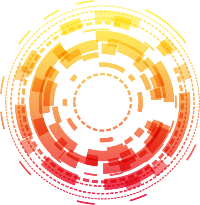Meta is boldly positioning itself at the forefront of wearable technology by launching its new AI glasses models alongside a groundbreaking developer access toolkit. This strategic move signals a shift from solitary device development toward fostering an open and vibrant ecosystem of third-party applications. By democratizing the platform, Meta aims to accelerate innovation, diversify use cases, and ultimately embed its glasses deeply into daily life. The introduction of the Meta Wearables Device Access Toolkit underscores a pivotal belief: the future of wearables lies not just in hardware, but in the rich tapestry of software experiences that external developers can craft.
What makes this approach powerful is Meta’s recognition that pushing the boundaries of what AI glasses can do requires collective ingenuity. No single company, even a tech giant, can anticipate every potential use case. By opening the sensors and functionalities—initially including the camera and audio—Meta effectively invites creators to imagine new possibilities: from immersive real-time streaming to assistive navigation tools. This strategy neither limits the device’s evolution nor constrains user experience; instead, it creates fertile ground for innovation to flourish from diverse perspectives.
Early Signs of Transformative Impact
Meta’s venture into an open developer platform isn’t just theoretical—it’s already beginning to show promising outcomes. Major partners like Disney are exploring how AI glasses can enhance guest experiences within theme parks, offering visitors instant guidance and tips. Such applications could redefine how we engage with physical spaces, blending augmented reality with real-time assistance seamlessly.
Meanwhile, content creators stand to benefit immensely. Streaming platforms such as Twitch are piloting apps that allow broadcasters to live stream directly from the glasses, opening new doors for immersive content delivery. These innovations could reshape how audiences interact with their favorite creators, making virtual presence more spontaneous and intimate.
Furthermore, the inclusion of assistive tech by organizations like HumanWare highlights the social impact potential. Imagine visually impaired individuals receiving real-time, context-aware navigation guidance delivered through wearable sensors—that’s a leap toward more inclusive technology that genuinely improves lives.
Yet, these developments are only the tip of the iceberg. As Meta expands the toolkit’s capabilities—potentially integrating the AR display, gesture controls, and wristband inputs—the scope for transformative applications widens dramatically. Developers could craft everything from complex professional workflows to personalized fitness coaching, turning the glasses into versatile tools across domains.
Fostering Widespread Adoption and Market Penetration
Meta’s cautious rollout—limited preview access and phased testing—serves a strategic purpose. It ensures that the platform matures responsibly, minimizing bugs and unforeseen challenges. Moreover, by involving early adopters and feedback-driven refinement, Meta can fine-tune the user and developer experience, fostering trust and enthusiasm.
The broader vision extends beyond incremental improvements; Meta aims to cultivate a thriving developer community that generates an ecosystem of innovative apps. This ecosystem will likely serve as the catalyst for widespread consumer adoption, particularly as the company prepares for a major launch of its next-generation AR glasses in the coming year. The more external developers contribute to functionalities—such as fitness tracking, navigation, or entertainment—the more likely consumers will see compelling reasons to invest in Meta’s hardware.
By enabling third-party integrations that cater to a range of interests and needs, Meta not only enhances its hardware’s value proposition but also positions itself as an innovative leader in consumer wearables. This strategic move could serve as a critical differentiator in a competitive market increasingly saturated with AR and VR devices, driving home the message that Meta’s ecosystem is vibrant, adaptable, and future-proof.
The Bold Vision for a Connected Future
Meta’s push to open its AI glasses platform signals more than just product development; it reveals a bold vision for a future where wearables are seamlessly integrated with countless facets of our digital lives. With the developer toolkit, Meta is attempting to ignite a wave of ingenuity that will transform these glasses from niche gadgets into essential everyday tools.
This bold approach addresses a fundamental challenge in the wearable tech space: how to create devices that are not just standalone products but platforms capable of evolving into personalized, multifunctional assistants. By fostering a community of developers and enabling them to build innovative applications, Meta intends to accelerate the realization of this vision—making AI glasses indispensable in health, entertainment, navigation, and countless other areas.
Meta’s open platform strategy embodies an understanding that the most transformative technologies are those shaped collaboratively. If successful, it could elevate Meta’s wearables from experimental gadgets to ubiquitous elements of daily life, all powered by a vibrant community of creators and users pushing the boundaries of what’s possible.

